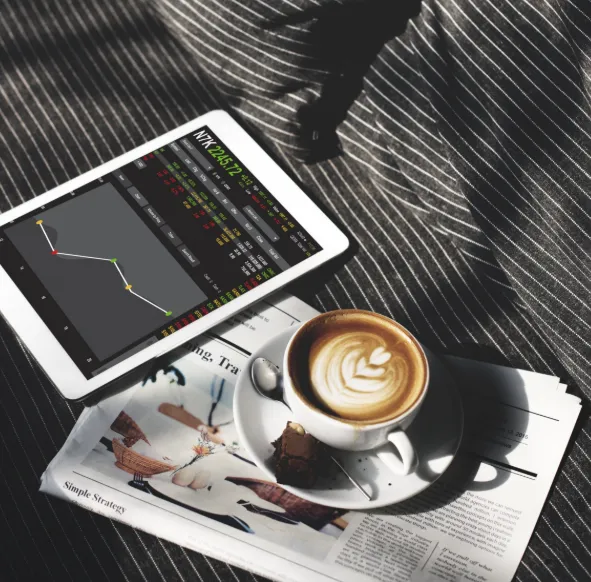Day trading is a dynamic and potentially profitable trading style that involves executing trades within a single day, often opening and closing positions within hours or even minutes. With its short time horizon, day trading heavily relies on technical analysis to make quick, informed decisions. If you’re looking for a fast-paced trading approach that avoids overnight positions, day trading might be a suitable strategy for you.
This approach appeals to traders who are eager to capitalize on rapid market movements throughout the day. Day traders often use technical tools and strategies to enter and exit trades quickly, aiming to profit from short-term price changes. Whether you’re new to trading or an experienced investor looking for a more active strategy, day trading offers opportunities to learn and experiment in a fast-moving market.
What Makes a Day Trader?
You might be suited for day trading if:
- You can dedicate time throughout the day to monitor the market.
- You have a solid understanding of technical analysis and indicators.
- You prefer making quick, short-term trades instead of holding positions for extended periods.
- You like knowing the outcome of your trades (win or lose) by the end of the day.
However, day trading may not be ideal if:
- You prefer long-term investments over fast-paced trading.
- You have a conservative trading approach.
- You don’t have the time to monitor market movements in real-time, especially if you work a traditional 9-to-5 job.
Key Considerations for Day Traders
To succeed in day trading, you need to stay informed about key news events that could impact your trades. Real-time market analysis and rapid decision-making based on these factors are essential. Without the ability to stay fully engaged with the market, day trading could be challenging.
Popular Day Trading Strategies
- Trend Trading
Trend trading is one of the most common approaches in day trading. In this strategy, traders predict that an asset’s price will continue moving in the same direction. For example, if a trader believes the price of a currency pair is likely to rise, they would buy the asset and sell it later at a higher price.
To execute this strategy effectively, day traders use short-term momentum indicators, such as the Relative Strength Index (RSI), stochastic oscillators, and moving averages, to identify the optimal entry points. By analyzing longer timeframes, such as hourly or daily charts, traders can better understand the overall trend before zooming in on a shorter timeframe, like a 5-minute chart, for precise entry decisions.
- Countertrend Trading
Countertrend trading involves betting against the current market trend. For example, if prices are rising but start to fall, countertrend traders may sell, hoping to buy the asset back at a lower price later. While this strategy can be profitable if you accurately predict trend reversals, it carries a higher risk since you’re trading against the prevailing market direction.
This method is often used by more experienced traders who can spot when a trend might be ready to change. However, it’s crucial to be cautious, as betting against the trend can lead to significant losses if the market continues to move in the original direction.
- Range Trading
In range trading, traders look for assets that are fluctuating within a specific price range. They buy when prices hit the lower boundary (support level) and sell when prices hit the upper boundary (resistance level). Range traders focus on identifying key levels where the price tends to reverse.
This strategy is less risky than trend trading, as it doesn’t rely on major market shifts. Range traders use stop losses and limit orders to manage risk and ensure they’re buying and selling in line with the market’s fluctuations.
- Breakout Trading
Breakout trading aims to profit from periods of low volatility when prices break through significant support or resistance levels. Once the price breaks past a key level, traders enter the market, anticipating that the price will continue moving in the breakout direction.
Breakouts are often seen after a period of consolidation, where the market has been trading within a narrow range. By recognizing key market events and news, breakout traders can capitalize on large price movements when the market finally “breaks out.”
- News Trading
News trading is a strategy that focuses on profiting from economic news and events that cause significant market movements. Traders who use this strategy closely monitor news reports, looking for opportunities to trade based on new information that could impact market prices.
For instance, if a country’s central bank announces an interest rate hike, news traders might anticipate a large price movement in the related currency pair. While news trading can be highly profitable, it’s also risky, as the market’s reaction to news can be unpredictable. Many news traders combine both fundamental and technical analysis to spot trading opportunities.
Conclusion
Day trading offers an exciting opportunity to capitalize on short-term market fluctuations. By using technical analysis and various trading strategies, day traders aim to profit from market movements within the day. Whether you prefer trend trading, breakout strategies, or news-based trading, there’s a day trading style that can suit your preferences and risk tolerance. However, day trading requires time, focus, and quick decision-making, so it’s important to consider whether it aligns with your lifestyle and trading goals.













